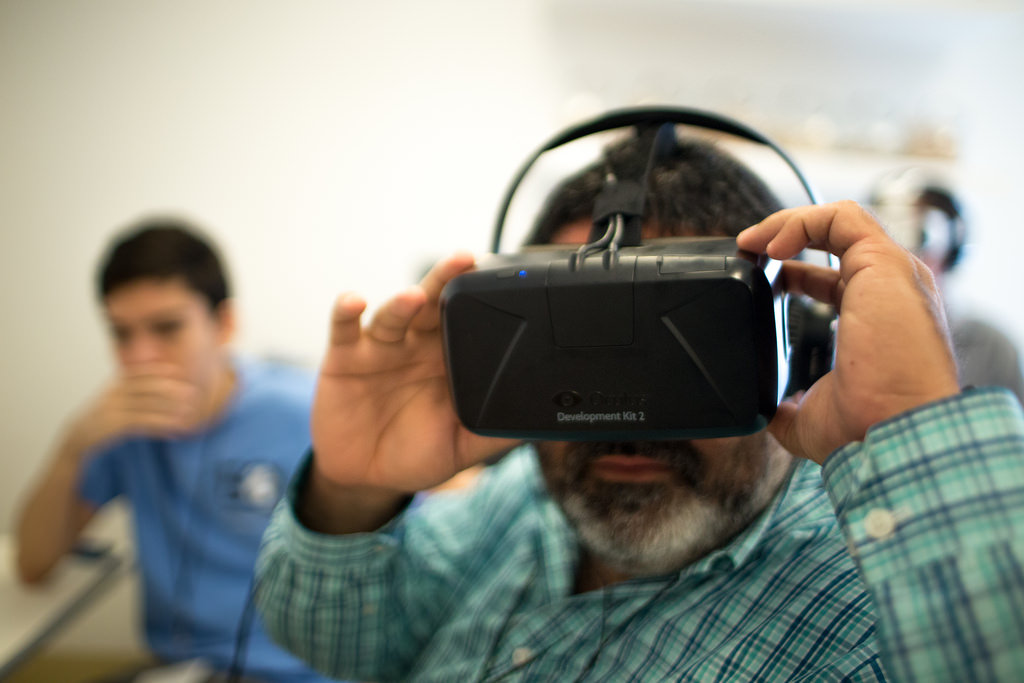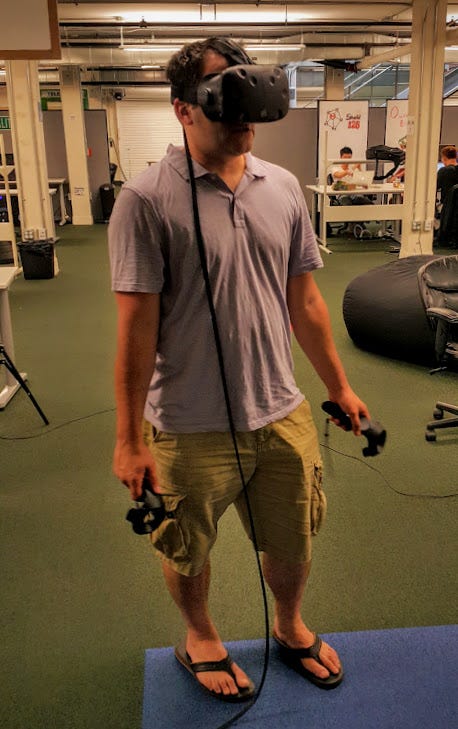Why You Should Start Experimenting with AR and VR Today

Those of us paying attention all knew it was only a matter of time before augmented reality (AR) and virtual reality (VR) became mainstream. Now, thanks to the rise of Oculus Rift and Pokémon Go, we’re beginning to arrive at that point.
First, some brief definitions so we are on the same page:
- Augmented reality is technology that integrates digital information into the actual environment surrounding a user in real time, usually via a smartphone or tablet. According to MarketsandMarkets, the AR market will grow at an annual clip of nearly 76% over the next six years,reaching $117.4 billion by 2022.
- Virtual reality is technology that generates a three-dimensional digital environment, tricking users into “believing” they’re inside that environment when interacting with the technology. MarketsandMarkets says the VR market will grow 57.8% each year between now and 2022. The market realized $1.37 billion in 2015 and is projected to bring in$33.9 billion by 2022.
If you or your company is in any position to create AR and VR products, now’s the time to get started. Even if you fail during your first attempt, you’ll get a head start on claiming as big a chunk of the AR and VR pies as you can.
I Couldn’t Jump
I am advising a company in the space, so recently I was lucky enough to visit an AR/VR accelerator and interact with the exciting new technologies that many businesses are building. I started playing with the Oculus Rift and thought it was pretty cool. I also got to try an HTC Vive (which I liked much better). Even though I knew what I was seeing was a digitalized environment, I wouldn’t “jump off of a cliff” when presented with the opportunity. It all seemed too real. Psychologically, I couldn’t do it.

My experiences, coupled with the media frenzy over Pokémon Go — which provides the first mainstream AR experience — have led me to one conclusion: you need to simply get involved and start building products now, rather than later. Because there’s really no such thing as failure in this case.
If you fail, it’ll probably be because the market isn’t big enough and the tech isn’t as popular as it will be one day. But you can learn from those shortcomings. And in two or three years when the market is booming, you’ll succeed because you’ll have learned a ton of helpful lessons while failing.
An Enormous Opportunity
Pokémon Go represents a breakout moment for augmented reality. But we’re still in the super-early stages of seeing the true power of the technology. It’s where mobile was when Michael Douglas was blabbing on an enormous cell phone in Wall Street.
So before you get turned off on AR because of how annoying you perceive Pokémon Go to be, it’s worth your while to consider how the technology can transform your company. If you’re a startup founder, there’s a good chance your first stab at AR or VR will be unsuccessful. But three to five years from now, you’ll be in one of the best positions to build the technology.
Need more convincing? F1 recently signed a deal that will allow its races to be streamed via VR devices. Racing fans will be able to see the course as if they were sitting in the driver’s seat themselves (which might be a way for racing to attract new fans — folks who previously couldn’t understand the sport’s appeal).
Despite these breakthroughs, there are very few masters of AR and VR technologies right now. Developers are going to AR/VR hackathons to learn more skills. The industry isn’t yet full of geniuses who are building the surefire next big thing.
But it will be sometime in the near future.
If you’re a technical startup person interested in the space, go out and start turning your AR and VR ideas into reality. While it might not be monetarily successful for you right off the bat, your efforts will undoubtedly help AR and VR technologies move forward. As an added bonus, you’ll become more intimate with the space — which should put you in a great position to claim a big chunk of the market through your subsequent AR and VR efforts.
—
First Photo by flickr user UTKnightCenter
Second Photo by Stephen Forte
